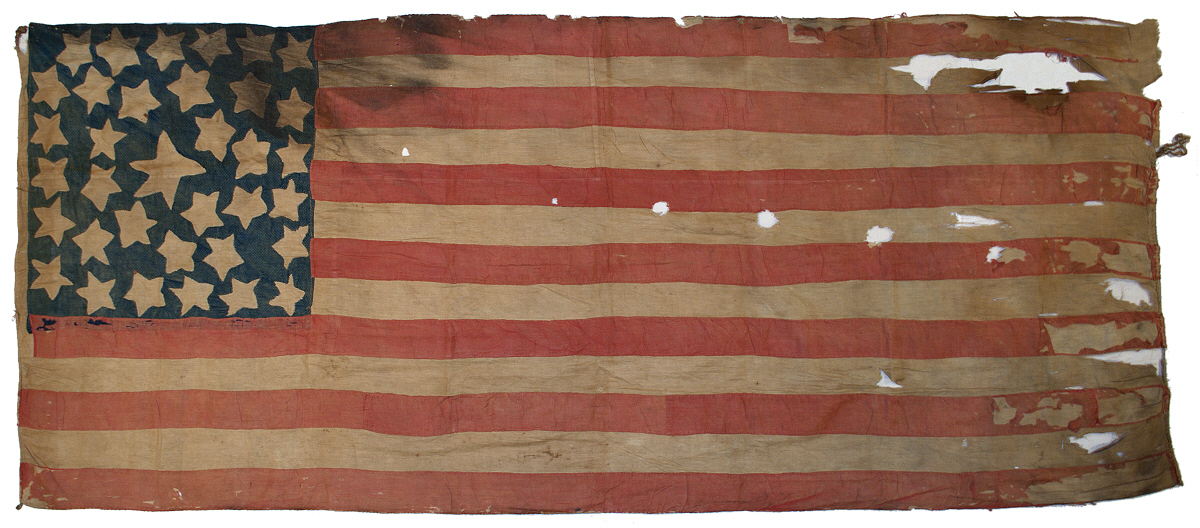|

Few
American flags capture the essence of the Civil
War like this 35 star homemade flag, made in 1863 along
the
Ohio-West Virginia border to celebrate
West Virginia statehood. West Virginia was born
amidst the conflict of the Civil War when the northwestern
counties of Virginia voted to secede from the
confederacy and form a new state for the Union.
This flag was flown from the Olive Green General Store
in Olive Green, Ohio, a town which no longer exists.
The flag, created by the Ohioans to
boldly welcome their West Virginia countrymen back to
the Union, stands as a
testament to the tensions stirred by West Virginia's
secession. According to family lore (and apparent
upon close visual inspection), the three
holes to the right-center of the flag are bullet holes
shot through the flag by dissenting southern sympathizers
as it hung on the general store.
The flag itself is a masterpiece of American folk art.
It exhibits several extremely rare characteristics
seldom found on American flags of any era. The
entire flag is constructed of a sheet of thick cotton
cloth onto which the blue canton and red stripes are
hand sewn. The practice of sewing a cut-through
canton and red stripes onto a solid white sheet is known
as "reverse appliqué". It is extremely rare and
almost never seen on American flags of any era.
Amazingly, both sides of the flag have their own sewn
stripes and cut through canton, with the same incredible
pattern of stars. The blue fabric used for the canton is
actually a calico print fabric, rather than a
traditional solid blue. The use of pattern printed
fabric on any American flag is also extremely rare, and
almost never seen. Perhaps ten or fewer flags that
I know of contain
fabric of a calico or other stylized print.
Interestingly, both ends of the flag feature a
rope-in-sleeve hoist, yet another rare trait. This
is further evidence that it was made to hang, anchored
on both sides, from the front of the general store.
Yet another rare trait is the fact that the canton rests
on a red stripe, commonly known as the "blood stripe".
Although not always the case, tradition is that this
trait is found on flags made during wartime to symbolize
the nation at war, and in this case it clearly holds
true. Finally, the extraordinarily whimsical shape of the
stars, arranged in a jostling pseudo-medallion, results
in one of the most visually interesting and
unique
cantons found on an American flag.
The soot at the top of
the flag indicate that the flag was probably flown or
hung near a chimney or wood burning stove. Unlike
the elongated tears toward the fly end of the flag, the
three holes in the center of the flag were clearly
caused by the traumatic impact of a bullet, not merely
a tear. The
flag is remarkably intact for a cotton flag that is
nearly 150 years old. It descended more
than 140 years in its original family and remains today
an early American treasure--at once a testament to both
the strife of the Civil War and the perseverance of the
American spirit. |

